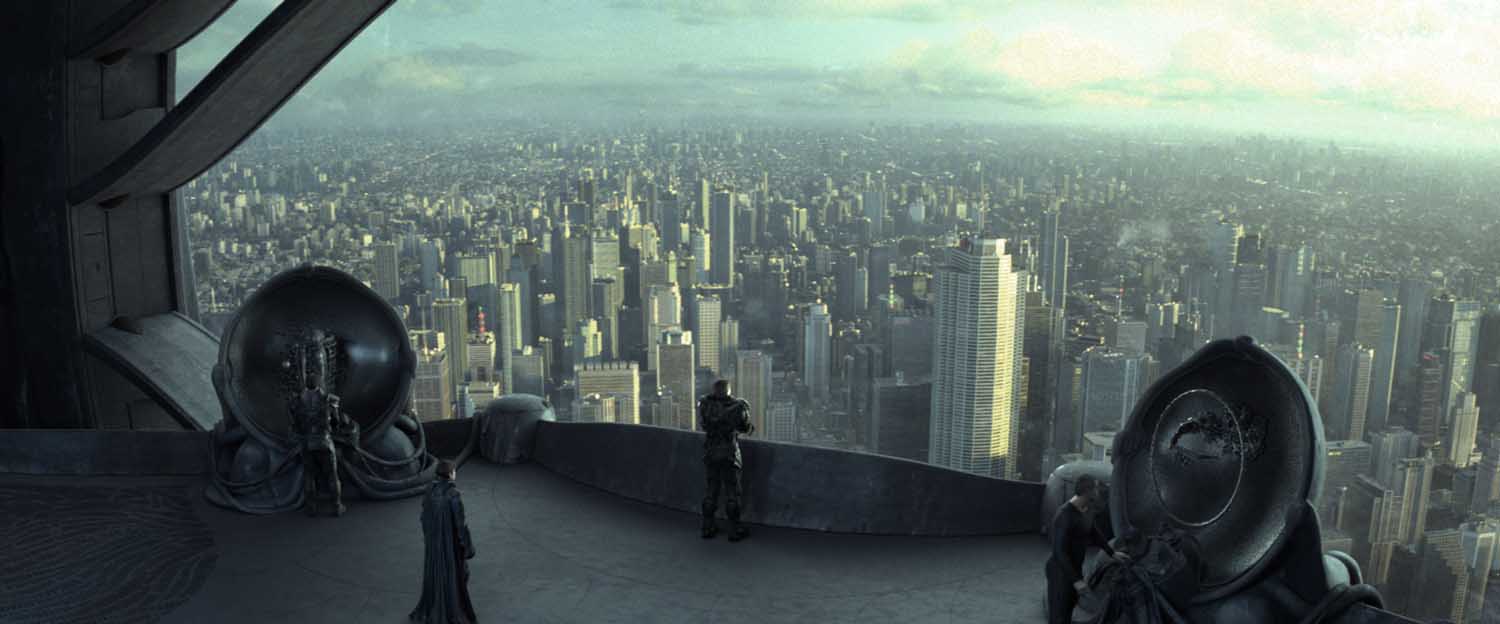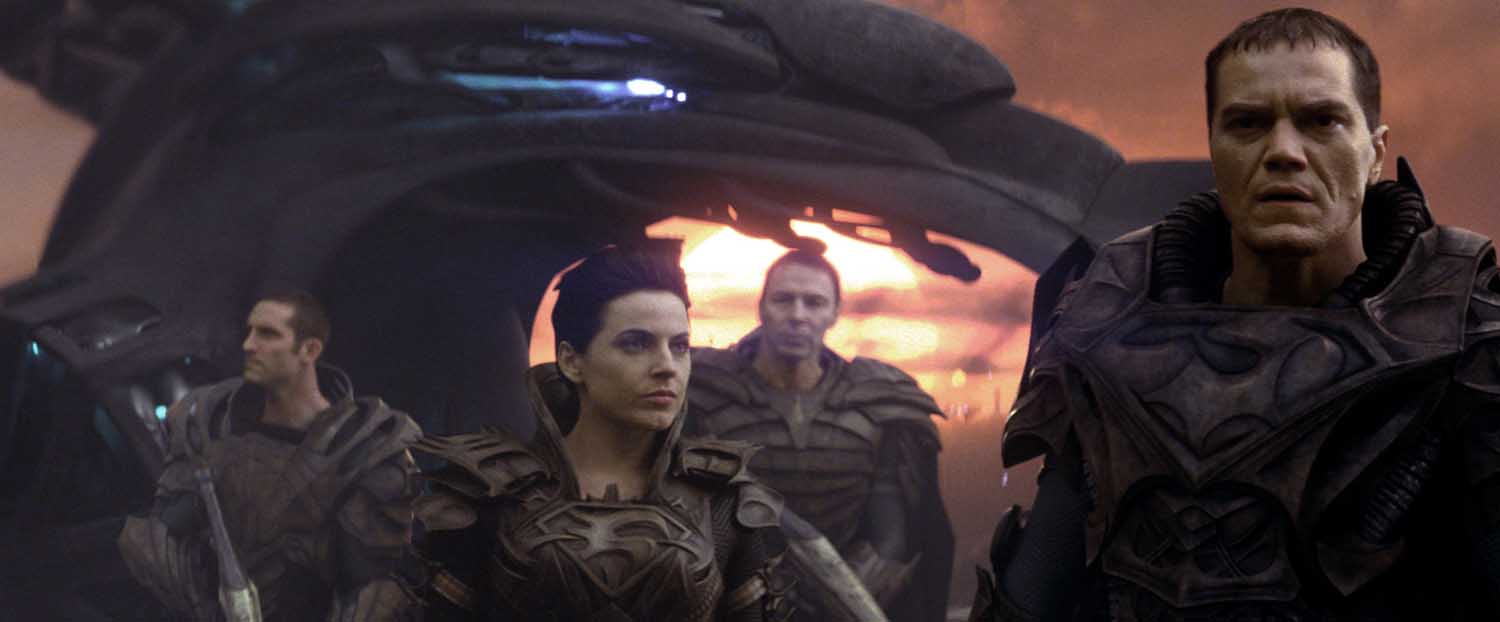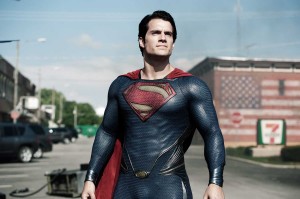
Des Jardin has made a journey of his own with director Zack Snyder, going back to his adaptation of the multi-superheroed Watchmen, through the fever dream of Sucker Punch, and now on to Man of Steel.
“Zack and I talk about what’s in the movie, what’s real, what’s CG,” as well as what’s going to be a location shoot, what’s going to be green screened, explained Des Jardin.
And they must get down to fairly precise differences, since there are often cuts between real actors and stunt doubles in a sequence, and their digital doppelgangers, sometimes only a few frames apart, back and forth, in the film’s many action sequences.
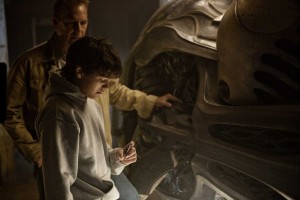 Another key aspect is to figure out “what’s the team?” on the VFX side, and how to parcel out sequences to each post house. Double Negative was brought on, for example, because producer Christopher Nolan had a relationship with them going back to his Batman films; MPC was brought on for fighting sequences, and Scanline VFX for shots with fire. Weta Digital handled the film’s storied Krypton sequences because, after all, “they had done Avatar.”
Another key aspect is to figure out “what’s the team?” on the VFX side, and how to parcel out sequences to each post house. Double Negative was brought on, for example, because producer Christopher Nolan had a relationship with them going back to his Batman films; MPC was brought on for fighting sequences, and Scanline VFX for shots with fire. Weta Digital handled the film’s storied Krypton sequences because, after all, “they had done Avatar.”
Dan Lemmon helped supervise for Weta, working with the busy Joe Letteri, as they shuttled between installments of ape uprisings and Hobbit journeys, along with their Kryptonian project.
“I met D.J. and Zack on the set in Chicago and looked at the artwork and script,” said Lemmon. “We talked about creating new worlds, and wanted to explore the science-fiction aspects of Superman’s origin.”
Much of that artwork came from production designer Alex McDowell, who also worked with the director on Watchmen.
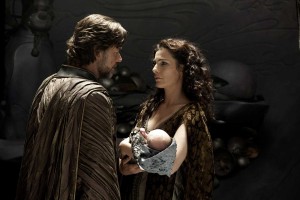 Thinking of how Krypton would look and function, in terms of advanced technology and genetic engineering, “Alex extended these ideas into the city’s architecture, which would be ‘grown’ rather than ‘built.’ Any line on Krypton would have multiple radius curvatures.” As in nature itself, there would be no straight lines.
Thinking of how Krypton would look and function, in terms of advanced technology and genetic engineering, “Alex extended these ideas into the city’s architecture, which would be ‘grown’ rather than ‘built.’ Any line on Krypton would have multiple radius curvatures.” As in nature itself, there would be no straight lines.
McDowell, Lemmon continued, was a “very technologically savvy designer.” His team started with foam sculptures, then scanned those sculptures into computers, ultimately designing “50-foot shapes” made of strips of glass, plastic and lathe to give them that Kryptonian “giant-seashell” feeling. “McDowell is a man who’s comfortable working with visual effects and technology,” said Lemmon.
But they didn’t only share sensibilities with McDowell, while extending his set designs and rendering more of Krypton, they also shared a lot of assets with other FX houses.
Des Jardin contrasted the experience on Sucker Punch, where post houses worked on contained scenes, all discrete from each other to Man of Steel, where they allowed “certain assets to branch off and go wherever they need to.”
This became more necessary as the science-fiction elements of Krypton intruded into the Earth of Jonathan, Martha and Clark Kent, as General Zod’s ship arrived, and an earlier ship – containing some answers for a searching Clark – is discovered in the ice.
And while Earth might have its straight lines, Des Jardin made use of his own curvatures, deploying a Roundshot camera – a digital panoramic camera that gives a full 360-degree ultra-resolution panoramic image in about two seconds – to capture actors and locales. Des Jardin liked the stitchable tiles that the camera delivered, which allowed for images of actors to be taken in the middle of action sequences, and used for later digital interpolation.
For example, when Superman actor Henry Cavill is throwing Feora, one of General Zod’s fellow “Phantom Zone escapees,” around during a brawl, they would snap the actors with the Roundshot camera at moments where they knew they’d have to digitally extend the action, or intercut for a few frames with digital doubles.
“The Roundshot takes the place of a large orthographic location photo shoot,” Des Jardin continued. It also allowed the live action to proceed in a more organic way, by capturing panoramic information that would help visualize the scene, so that everyone could understand “how we wanted to move the camera” through the mayhem of a wrecked Smallville.
He added that the Roundshot information is so hi-res that you can dolly in any direction, zoom in and change camera angles within the captured 360 degrees. It also helped Snyder achieve the overall look he wanted, which was “more documentary and more realistic” compared to the “operatic camera” of the movies starring Christopher Reeve.
According to Lemmon, they also needed to “make it relevant to a contemporary audience,” something that “cuts to the heart of what it means to be Superman.” Towards that end, Lemmon and the Weta crew tried to build a place that made sense for the story – a Krypton, in other words, that was both palpable and alien, and in selling the feel of the latter, they hoped to convey to the audience what it means to be an outsider.
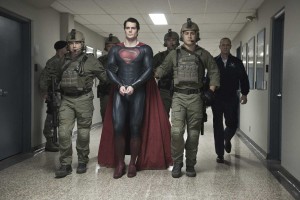 Of the process itself, Lemmon said, “D.J.’s a great guy to work with,” and he was the one translating Snyder’s strong visual ideas to Weta and the other vendors.
Of the process itself, Lemmon said, “D.J.’s a great guy to work with,” and he was the one translating Snyder’s strong visual ideas to Weta and the other vendors.
According to Des Jardin, it was all part of an attempt, to try to get into post without too many surprises.
Of course, the surprises always crop up, no matter how well-planned the storyboards or previs sequences. Des Jardin recounted assembling sequences near Ground Zero – where the Daily Planet building and the surrounding city are being leveled by the rumbling Kryptonians.
The various blast survivors were seen “running down the street way down there,” in the original shots, and Snyder realized he didn’t have any closer Ground Zero shots. “Let’s see if we can make these more immediate,” Snyder said, asking to pull the plates for the sequence. With the plates, they could start figuring out what CG buildings to put in, and generally heighten the action, making it more immediate and perilous.
But not every human who witnessed the brawl of Zod and Superman was frightened or cowering behind rubble. Des Jardin happily recalls a text message from a producer he’s working with on a different film, who had just watched Man of Steel with his son.
The young Superman fan turned to his dad and said, “This is the fight I’ve been waiting for.”
How much of a wait there might be for a super sequel is still unknown, but Des Jardin is back working on the Snyder-produced follow-up to 300, and after that he’s booked for an untitled Warner Bros. project.
Whether that means a Justice League movie, or something more Super-specific, we’ll have to see. Hopefully the digital remains of both Smallville and Metropolis will have been rebuilt, and our resident Kryptonian will be feeling a little less alien.

